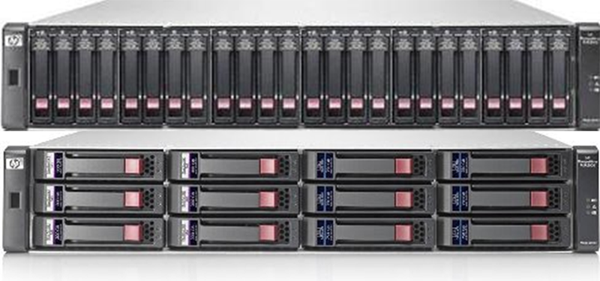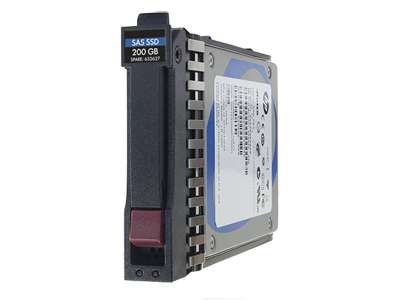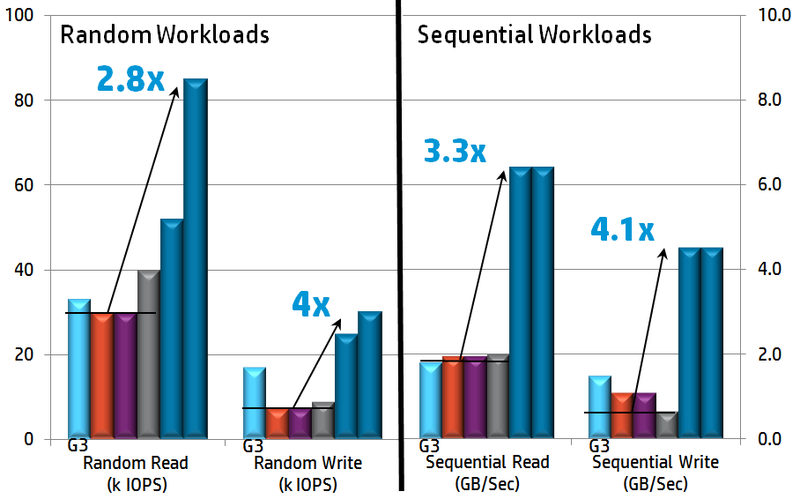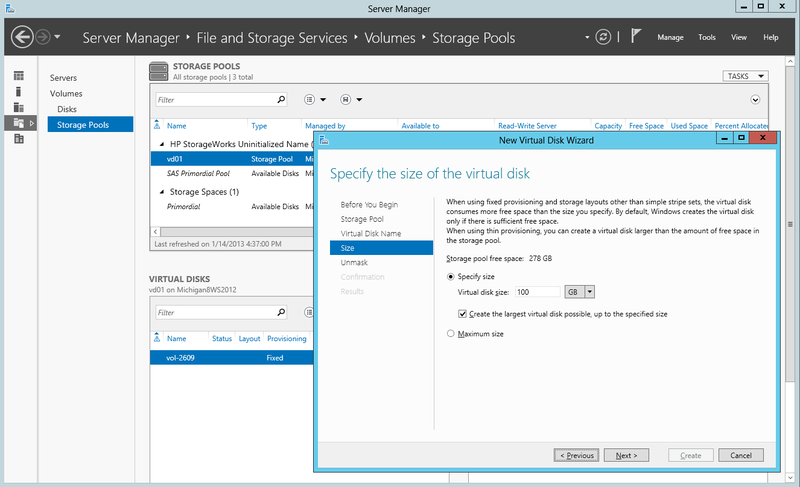Upgrading HP Entry Storage Systems
In June 2013, the next release of new products from HP in data storage systems took place.
This time the Entry level segment was affected in data storage systems - a new model MSA 2040 was announced.

There are about 30 million small businesses in the world that are experiencing difficulties with current storage systems and who require productive arrays at affordable prices, the announcement is intended for this audience to a greater extent.
These are already 4 generations of arrays, which have proven themselves as entry-level systems with wide functionality and serious scalability.
What changed?
The name has changed - now the array is called HP MSA 2040. The P2000 G3 arrays will be available for order for another year.
The performance of the array controllers has increased - now each controller has 4GB of cache on fast DDR3 memory.
There is support for SSD drives, now the systems support MLC 200 GB, 400 GB, 800 GB drives. The disks are equipped with a wear warning system, which allows you to predict the replacement of a failed disk. The carriers have an extended service life of 5 years, each disk has 30,000 rewriting cycles, in addition, the parameter DWPD (Data Write Per Day) of the carrier is 10 times its capacity per day. The amount of recorded data on a 400 GB medium in 5 years will be 7 PB. The minimum number of disks per system is 4, one mirror pair per controller.

For MSA 2040, the performance compared with the third generation for random loads increased by 2.8 times in reading, for sequential loads - by 4.1 times (for sequential writing). Now the user can count on values from 50,000 - 80,000 IOPs.

Fig.1 Comparison of the performance of existing storage systems (left) with MSA 2040 (right) for different loads
')
It should be noted that in order to obtain such performance it is not necessary to add a large number of spindles; this can be done by adding several SSD carriers, which affects the cost of the solution for the better.
Higher bandwidth ports were also added: models with FC 16Gb, FC 8Gb ports are initially available, by the end of the year, combo controllers with FC / 10Gb and SAS 12Gb will be announced.
The number of SFF SAS supported disks has increased - the array can expand up to 199 SFF disks, while the number of LFF disks remains the same - 96.
The upgrade option has been preserved - MSA G3 controllers can be replaced with new-generation models, while existing shelves can be cascaded to new controllers, but new disk types will be supported in SAS 6G shelves.
In addition to the above, the following microcode updates support thin volumes (Thin Provisioning) and data "tiring" (LUN tiering).
The extended functionality of data copying (replication, snapshots) has been preserved in full, with the installation of the array, these licenses are activated for 60 days and 64 snapshots, then you can buy an extended license for 512 copies.
The array supports management directly from Windows Server 2012 through the Windows Standards-based Storage Management Service (SMI-S), which greatly simplifies work in small enterprises dominated by the Windows environment. Management of the following functionality via SMI-S is supported: Storage Pools, Virtual Disks, Mapping, Shanshots / Clones.

Fig.2 MSA 2040 array control panel from Windows Server 2012
The application environment of the new generation of arrays is virtualization, OLTP, sequential load, databases (SSD for indexing / TempDB).
Bibliography:
Quickspecs MSA 2040
This time the Entry level segment was affected in data storage systems - a new model MSA 2040 was announced.

There are about 30 million small businesses in the world that are experiencing difficulties with current storage systems and who require productive arrays at affordable prices, the announcement is intended for this audience to a greater extent.
These are already 4 generations of arrays, which have proven themselves as entry-level systems with wide functionality and serious scalability.
What changed?
The name has changed - now the array is called HP MSA 2040. The P2000 G3 arrays will be available for order for another year.
The performance of the array controllers has increased - now each controller has 4GB of cache on fast DDR3 memory.
There is support for SSD drives, now the systems support MLC 200 GB, 400 GB, 800 GB drives. The disks are equipped with a wear warning system, which allows you to predict the replacement of a failed disk. The carriers have an extended service life of 5 years, each disk has 30,000 rewriting cycles, in addition, the parameter DWPD (Data Write Per Day) of the carrier is 10 times its capacity per day. The amount of recorded data on a 400 GB medium in 5 years will be 7 PB. The minimum number of disks per system is 4, one mirror pair per controller.

For MSA 2040, the performance compared with the third generation for random loads increased by 2.8 times in reading, for sequential loads - by 4.1 times (for sequential writing). Now the user can count on values from 50,000 - 80,000 IOPs.

Fig.1 Comparison of the performance of existing storage systems (left) with MSA 2040 (right) for different loads
')
It should be noted that in order to obtain such performance it is not necessary to add a large number of spindles; this can be done by adding several SSD carriers, which affects the cost of the solution for the better.
Higher bandwidth ports were also added: models with FC 16Gb, FC 8Gb ports are initially available, by the end of the year, combo controllers with FC / 10Gb and SAS 12Gb will be announced.
The number of SFF SAS supported disks has increased - the array can expand up to 199 SFF disks, while the number of LFF disks remains the same - 96.
The upgrade option has been preserved - MSA G3 controllers can be replaced with new-generation models, while existing shelves can be cascaded to new controllers, but new disk types will be supported in SAS 6G shelves.
In addition to the above, the following microcode updates support thin volumes (Thin Provisioning) and data "tiring" (LUN tiering).
The extended functionality of data copying (replication, snapshots) has been preserved in full, with the installation of the array, these licenses are activated for 60 days and 64 snapshots, then you can buy an extended license for 512 copies.
The array supports management directly from Windows Server 2012 through the Windows Standards-based Storage Management Service (SMI-S), which greatly simplifies work in small enterprises dominated by the Windows environment. Management of the following functionality via SMI-S is supported: Storage Pools, Virtual Disks, Mapping, Shanshots / Clones.

Fig.2 MSA 2040 array control panel from Windows Server 2012
The application environment of the new generation of arrays is virtualization, OLTP, sequential load, databases (SSD for indexing / TempDB).
Bibliography:
Quickspecs MSA 2040
Source: https://habr.com/ru/post/183530/
All Articles